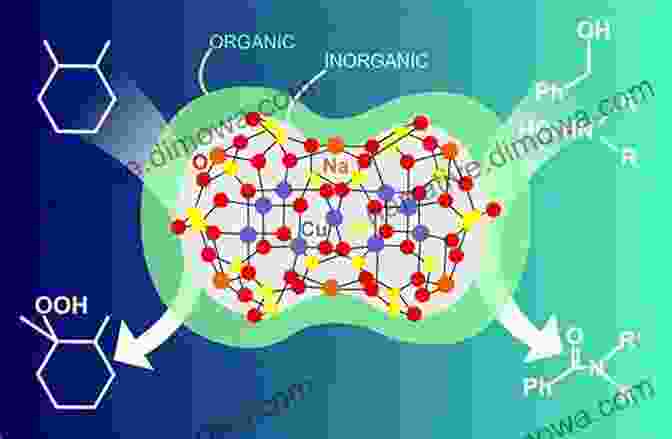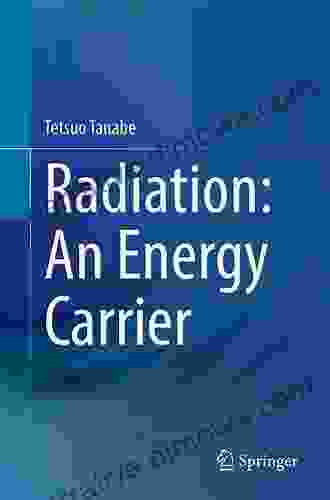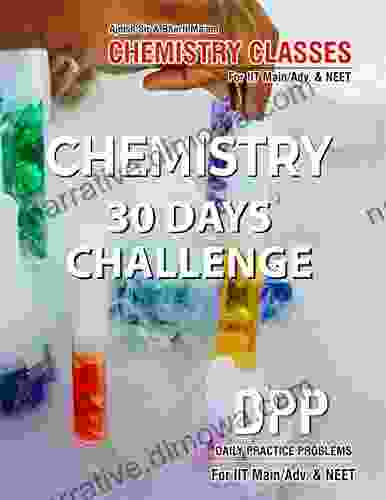Silica Based Organic Inorganic Hybrid Nanomaterials: A Revolutionary Frontier in Nanoscience

5 out of 5
| Language | : | English |
| File size | : | 13398 KB |
| Text-to-Speech | : | Enabled |
| Screen Reader | : | Supported |
| Enhanced typesetting | : | Enabled |
| Print length | : | 307 pages |
| X-Ray for textbooks | : | Enabled |

Nanomaterials have emerged as a pivotal force in modern science and technology, revolutionizing diverse sectors from healthcare to electronics. Among this vast array of materials, silica based organic inorganic hybrid nanomaterials have captured the attention of researchers worldwide due to their exceptional properties and versatility. This article delves into the fascinating world of these hybrid nanomaterials, exploring their unique characteristics, synthesis methods, and groundbreaking applications.
Understanding Silica Based Organic Inorganic Hybrid Nanomaterials
Silica based organic inorganic hybrid nanomaterials are a class of materials that combine the properties of both organic and inorganic components, creating a synergistic blend that surpasses the limitations of individual materials. They are formed by incorporating organic molecules or polymers into a silica matrix, resulting in materials with tailored properties for specific applications.
The inorganic silica component provides structural stability, mechanical strength, and thermal resistance. On the other hand, the organic component imparts flexibility, functionality, and biocompatibility. This unique combination enables silica based organic inorganic hybrid nanomaterials to exhibit a wide range of properties, including:
* High surface area * Controlled porosity * Tunable optical properties * Electrical conductivity * Magnetic properties
These properties make silica based organic inorganic hybrid nanomaterials promising candidates for applications in fields such as:
* Drug delivery * Biosensing * Catalysis * Energy storage * Electronics
Synthesis of Silica Based Organic Inorganic Hybrid Nanomaterials
The synthesis of silica based organic inorganic hybrid nanomaterials involves various techniques, each offering distinct advantages and control over material properties. Common synthesis methods include:
* Sol-gel method: This method involves the hydrolysis and condensation of alkoxysilanes in the presence of organic molecules. It allows for precise control over the composition and morphology of the resulting nanomaterials. * Emulsion-templated synthesis: In this approach, an emulsion is formed by mixing two immiscible liquids, such as water and oil. Organic molecules are then incorporated into the emulsion, which serves as a template for the formation of silica nanostructures. * Self-assembly: This method utilizes the inherent self-assembling properties of organic molecules and silica precursors to form organized nanostructures. It offers precise control over the size and shape of the resulting nanomaterials.
Groundbreaking Applications of Silica Based Organic Inorganic Hybrid Nanomaterials
The remarkable properties of silica based organic inorganic hybrid nanomaterials have opened up a plethora of cutting-edge applications across various fields. Some of these transformative applications include:
* Drug delivery: These nanomaterials serve as efficient drug carriers, enabling targeted and controlled release of therapeutic drugs to specific organs or tissues. * Biosensing: Their high surface area and tunable optical properties make them ideal for biosensing applications, allowing for the detection of biomarkers and pathogens with high sensitivity. * Catalysis: The incorporation of organic molecules into the silica matrix creates active sites for catalytic reactions, enhancing the efficiency and selectivity of catalytic processes. * Energy storage: These nanomaterials possess high energy density and long cycle life, making them promising candidates for energy storage devices such as batteries and supercapacitors. * Electronics: Their electrical conductivity and tunable optical properties enable their use in electronic devices such as transistors, solar cells, and LEDs.
Silica based organic inorganic hybrid nanomaterials represent a cutting-edge class of materials that have revolutionized the field of nanoscience. Their unique combination of properties, coupled with their versatility, has opened up a wide range of transformative applications in fields such as medicine, energy, and electronics. As research continues to unlock the full potential of these hybrid nanomaterials, we can expect even more groundbreaking innovations and advancements in the years to come.
5 out of 5
| Language | : | English |
| File size | : | 13398 KB |
| Text-to-Speech | : | Enabled |
| Screen Reader | : | Supported |
| Enhanced typesetting | : | Enabled |
| Print length | : | 307 pages |
| X-Ray for textbooks | : | Enabled |
Do you want to contribute by writing guest posts on this blog?
Please contact us and send us a resume of previous articles that you have written.
 Book
Book Novel
Novel Page
Page Chapter
Chapter Text
Text Story
Story Genre
Genre Reader
Reader Library
Library Paperback
Paperback E-book
E-book Magazine
Magazine Newspaper
Newspaper Paragraph
Paragraph Sentence
Sentence Bookmark
Bookmark Shelf
Shelf Glossary
Glossary Bibliography
Bibliography Foreword
Foreword Preface
Preface Synopsis
Synopsis Annotation
Annotation Footnote
Footnote Manuscript
Manuscript Scroll
Scroll Codex
Codex Tome
Tome Bestseller
Bestseller Classics
Classics Library card
Library card Narrative
Narrative Biography
Biography Autobiography
Autobiography Memoir
Memoir Reference
Reference Encyclopedia
Encyclopedia Andrea Rand
Andrea Rand Angelo Aulisa
Angelo Aulisa Heather Piper
Heather Piper Andrea Sutcliffe
Andrea Sutcliffe Andrey Taranov
Andrey Taranov Andrew F Smith
Andrew F Smith Andy Kuo
Andy Kuo Pierluigi Panza
Pierluigi Panza Andrew Wareham
Andrew Wareham Angel Devlin
Angel Devlin Andreu Enrich
Andreu Enrich Andrew Whitmarsh
Andrew Whitmarsh Kristin Lee
Kristin Lee Curtis D Anderson
Curtis D Anderson Sheron Long
Sheron Long Anant Pai
Anant Pai Andrea Berlusconi
Andrea Berlusconi Mel Gussow
Mel Gussow Andrew Gant
Andrew Gant Andy Mangels
Andy Mangels
Light bulbAdvertise smarter! Our strategic ad space ensures maximum exposure. Reserve your spot today!

 Ernest ClineSecret Princess Margaret Stohl: A Journey into the Enchanting World of Faerie
Ernest ClineSecret Princess Margaret Stohl: A Journey into the Enchanting World of Faerie Connor MitchellFollow ·5.3k
Connor MitchellFollow ·5.3k Dale MitchellFollow ·16.9k
Dale MitchellFollow ·16.9k Ryūnosuke AkutagawaFollow ·16.7k
Ryūnosuke AkutagawaFollow ·16.7k Harry CookFollow ·4.5k
Harry CookFollow ·4.5k Eric HayesFollow ·10.1k
Eric HayesFollow ·10.1k Gabriel BlairFollow ·7k
Gabriel BlairFollow ·7k Lee SimmonsFollow ·12.3k
Lee SimmonsFollow ·12.3k Hunter MitchellFollow ·5.9k
Hunter MitchellFollow ·5.9k
 Milton Bell
Milton BellLiterary Cabins: A Glimpse into the Creative Havens of...
Unveiling the secrets of literary creation,...

 Cameron Reed
Cameron ReedEmbark on an Extraordinary Journey with Anh Do's "Extra...
Dive into the Hilarious, Heartfelt, and...

 Herman Mitchell
Herman MitchellSado: Japan's Island in Exile - Explore a Hidden Gem Rich...
Sado Island, a hidden...

 Abe Mitchell
Abe MitchellJeff Madison and the Shimmers of Drakmere: An Enchanting...
In the heart of the...

 Everett Bell
Everett BellRadiation: An Energy Carrier - Unlocking the Secrets of...
In the vast realm of...
5 out of 5
| Language | : | English |
| File size | : | 13398 KB |
| Text-to-Speech | : | Enabled |
| Screen Reader | : | Supported |
| Enhanced typesetting | : | Enabled |
| Print length | : | 307 pages |
| X-Ray for textbooks | : | Enabled |












